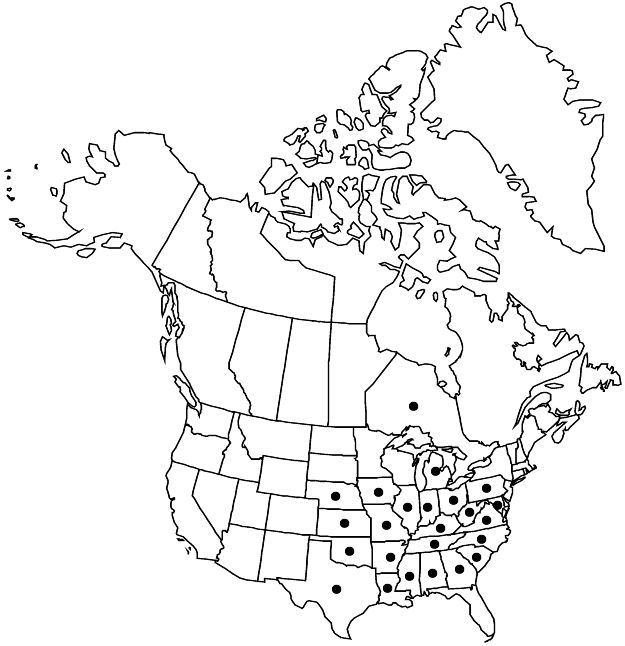Euphorbia dentata
Fl. Bor.-Amer. 2: 211. 1803.
Herbs, annual, with taproot. Stems erect or ascending, 15–60 cm, both pilose and inconspicuously strigillose; branches usually ± straight, occasionally proximal branches arcuate. Leaves usually opposite, occasionally alternate at distal nodes; petiole 5–20 mm, pilose; blade 30–70 × 4–35 mm, narrowly lanceolate to suborbiculate, usually broadest below middle, base usually acute to subobtuse, rarely subtruncate, margins coarsely crenate-dentate or doubly crenate, strigillose, flat to slightly revolute, apex broadly acute, abaxial surface long pilose with weak, filiform hairs, adaxial surface sparsely pilose to glabrate; venation pinnate, midvein prominent. Cyathial arrangement: terminal pleiochasial branches usually 3, occasionally reduced to congested cyme, 1–2-branched; pleiochasial bracts 2–4, often whorled, wholly green or paler green, white, or mauve at base, similar in shape and size to distal leaves or slightly narrower; dichasial bracts similar in shape to distal leaves but smaller (often highly reduced). Cyathia: peduncle 0.7–1 mm. Involucre campanulate, 3.8 × 1.8 mm, glabrous; involucral lobes divided into several linear, smooth lobes; glands (1–) 2, green, sessile and broadly attached, 0.7–0.9 × 0.9–1.2 mm, opening oblong, glabrous; appendages absent. Staminate flowers 8–10. Pistillate flowers: ovary glabrous, styles 1.2 mm, 2-fid 1/2 to nearly entire length. Capsules depressed-globose, 2.5–2.8 × 3.5–4 mm, 3-lobed, glabrous; columella 1.8–2.1 mm. Seeds pale gray to black, ovoid, rounded in cross-section, 2.1–2.7 × 1.7–2.1 mm, evenly minute-tuberculate; caruncle 0.4–0.6 mm. 2n = 28.
Phenology: Flowering and fruiting spring–fall.
Habitat: Bottomland forests, stream and river banks, bluffs, prairies, glades, fallow fields, roadsides, railroad cinders, open disturbed areas.
Elevation: 0–1000 m.
Distribution

Ont., Ala., Ark., Ga., Ill., Ind., Iowa, Kans., Ky., La., Md., Mich., Miss., Mo., Nebr., N.C., Ohio, Okla., Pa., S.C., Tenn., Tex., Va., W.Va., Mexico (Chihuahua), Mexico (Coahuila), Mexico (Nuevo León), Mexico (Tamaulipas)
Discussion
Euphorbia dentata is native from northern Mexico and the south central United States north and east through the Ohio River Valley. Scattered occurrences in the southeastern United States likely represent adventive populations. Reports of E. dentata as a noxious weed (from the United States and the Old World) should most likely be attributed to introductions of E. davidii.
Selected References
None.
Lower Taxa
No values specified."narrower" is not a number."connate" is not a number. "distinct" is not a number."entire" is not a number.